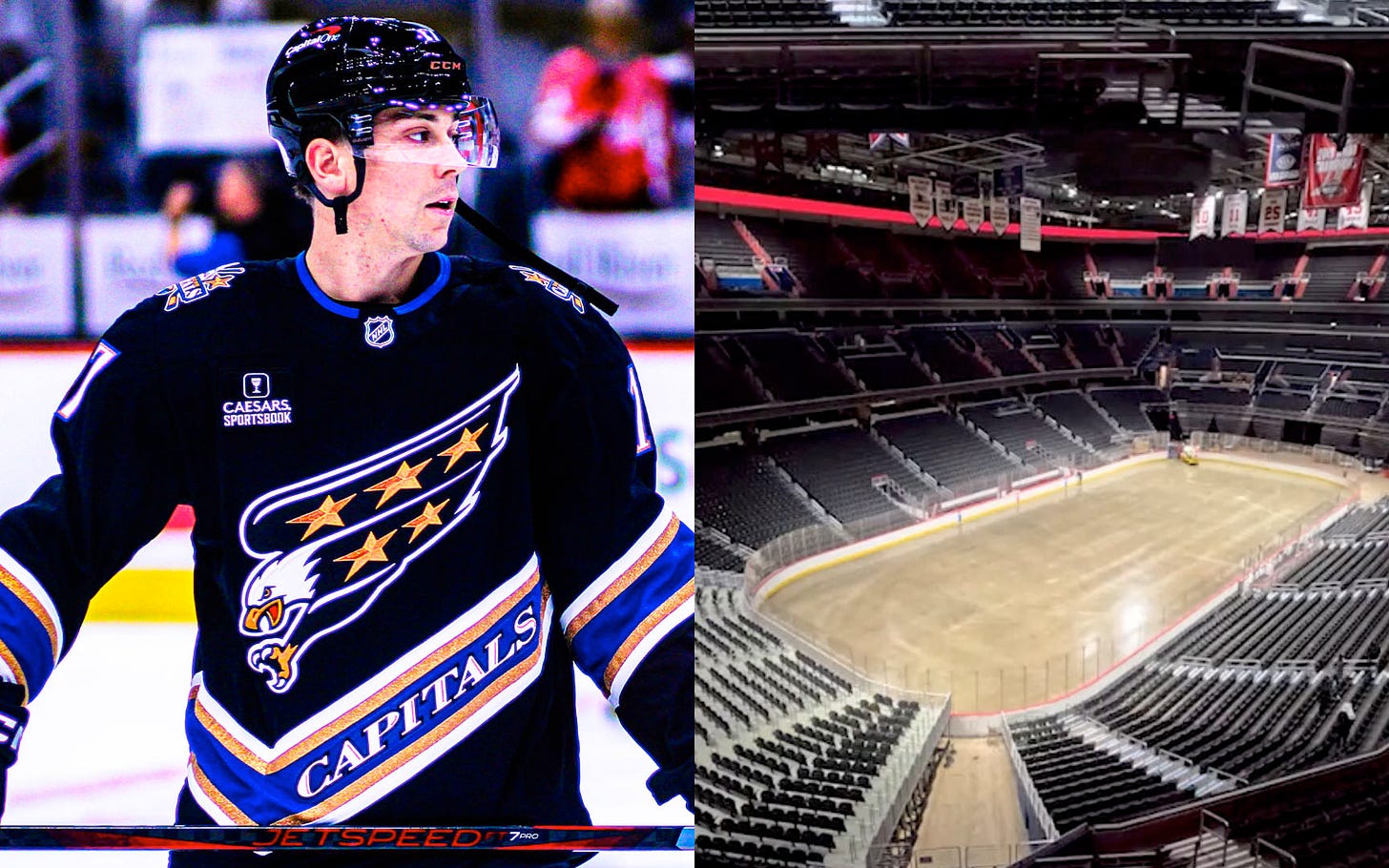How Ice Rinks Are Made, Explained By Capitals Center Dylan Strome
The Capitals pivot, a certified "hockey nerd," explains to DC Backcheck how the foundation of ice rinks are made.
Over my last eight seasons covering the Washington Capitals, I’ve learned a lot about the game from the players, from different ways to chirp to how to fight to the fundamentals of the game.
That said, I figured the offseason would be the perfect time to share some of the knowledge I’ve gotten from the players, and also test how much they know about the sport they love. That’s why I surveyed the room about the environment they play in:
How exactly does the ice they skate on get there?
I went to the players to find out.
“I don’t know,” Ethen Frank said with a smile. “I just skate on the ice.”
He and I agreed that the ice must magically appear, but that doesn’t make logical sense. It also only snows once a year, and it’d take too many $2.99 packs of ice from the gas station to fill a whole rink.
So I went to the one Capitals player who would know: certified hockey nerd Dylan Strome. And, surprising no one, he had the answer.
“I’m assuming there’s pipes under the ground that, when (workers) flood the concrete with water and build it up, they can freeze it cold enough to make it ice,” Strome said.
That’s the foundation. Pipes are embedded within the concrete, and the same technology found in refrigerators and air conditioners is used to make your ice rink. Water purifiers filter the water used for the ice, and brine water — a salt and water solution — is pumped through those pipes. Brine water freezes at a lower temperature than regular water, ensuring it’s cold enough to form the ice.
“They can keep it like that until they can take it out. That’s how rinks are here in the summer,” Strome pointed out.
The rink’s ice is then built in layers. The first layer is sprayed directly onto the concrete and instantly freezes, and at least 12 layers can form an ice rink. By the end of the process, which usually takes 48 hours, the 200x85-foot sheet of ice is one inch thick and ready to skate on.
“Concrete, water, a few more layers and make that ice or water as cold as possible to freeze. Now you have your base layer, then you can flood on top,” Strome said.
Where does the Zamboni come into play, though?
The ice needs to be maintained and resurfaced regularly to collect the snow that builds on the rink and keep the ice smooth. As it picks up the snow, it also puts down a thin layer of hot water (140-145 degrees Fahrenheit), to make the surface smooth again. It freezes quickly enough as to not melt the ice.
Add some paint and graphics, and boom. You have a working ice rink. Here’s a time-lapse video putting it all together, courtesy of the Washington Capitals.
This is the first in a series of hockey trivia stories featuring the players I’ll have over the course of the offseason and beyond, so stay tuned in to DC Backcheck to learn more about the sport we love.







Then how do they switch it to a court so quickly?
If the ice is made up of 12 layers, how many layers are on top of the blue lines, logo, etc?